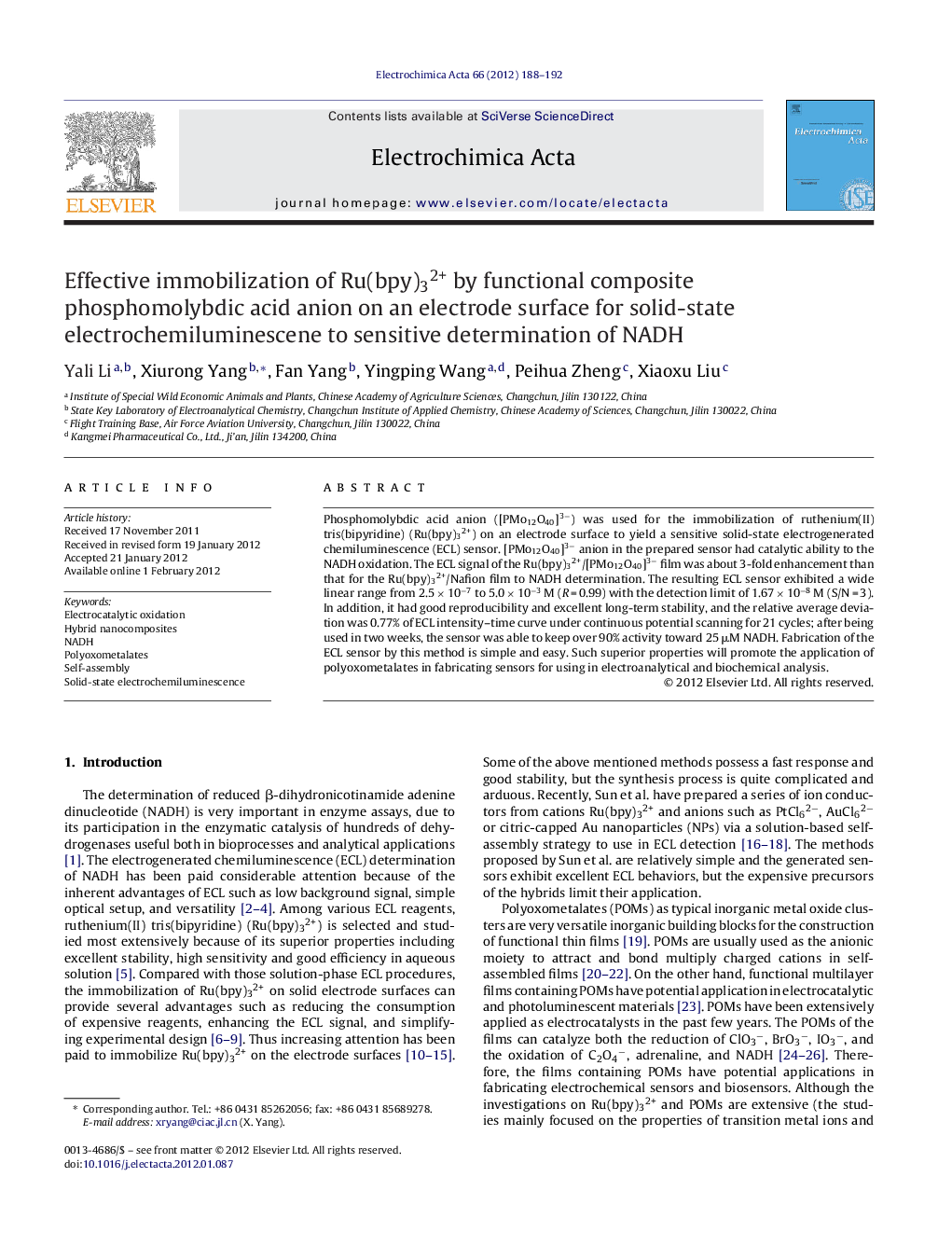| Article ID | Journal | Published Year | Pages | File Type |
|---|---|---|---|---|
| 188805 | Electrochimica Acta | 2012 | 5 Pages |
Phosphomolybdic acid anion ([PMo12O40]3−) was used for the immobilization of ruthenium(II) tris(bipyridine) (Ru(bpy)32+) on an electrode surface to yield a sensitive solid-state electrogenerated chemiluminescence (ECL) sensor. [PMo12O40]3− anion in the prepared sensor had catalytic ability to the NADH oxidation. The ECL signal of the Ru(bpy)32+/[PMo12O40]3− film was about 3-fold enhancement than that for the Ru(bpy)32+/Nafion film to NADH determination. The resulting ECL sensor exhibited a wide linear range from 2.5 × 10−7 to 5.0 × 10−3 M (R = 0.99) with the detection limit of 1.67 × 10−8 M (S/N = 3). In addition, it had good reproducibility and excellent long-term stability, and the relative average deviation was 0.77% of ECL intensity–time curve under continuous potential scanning for 21 cycles; after being used in two weeks, the sensor was able to keep over 90% activity toward 25 μM NADH. Fabrication of the ECL sensor by this method is simple and easy. Such superior properties will promote the application of polyoxometalates in fabricating sensors for using in electroanalytical and biochemical analysis.
